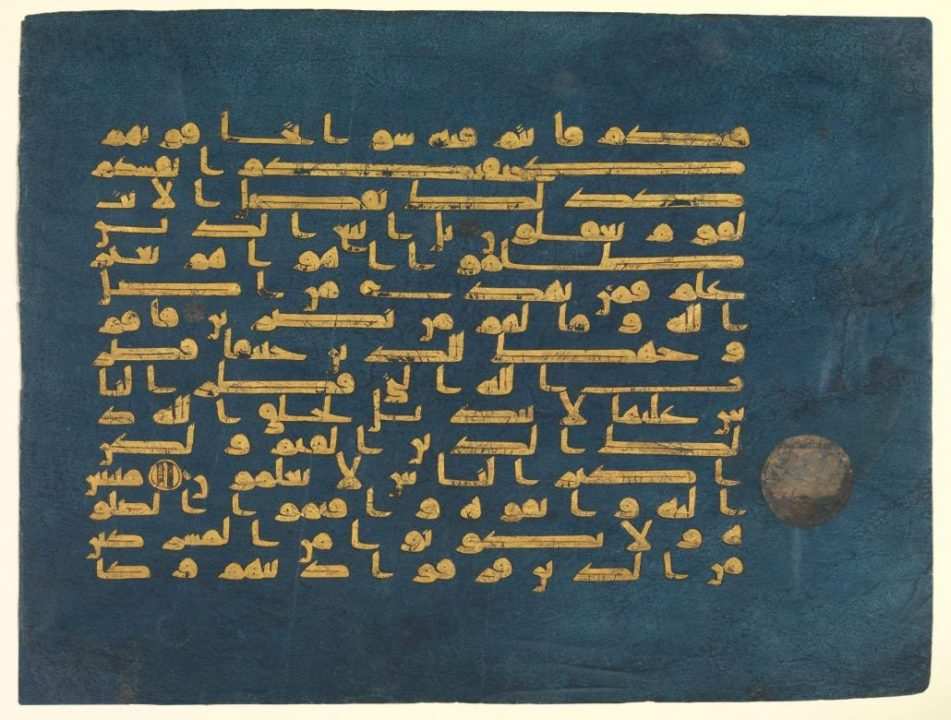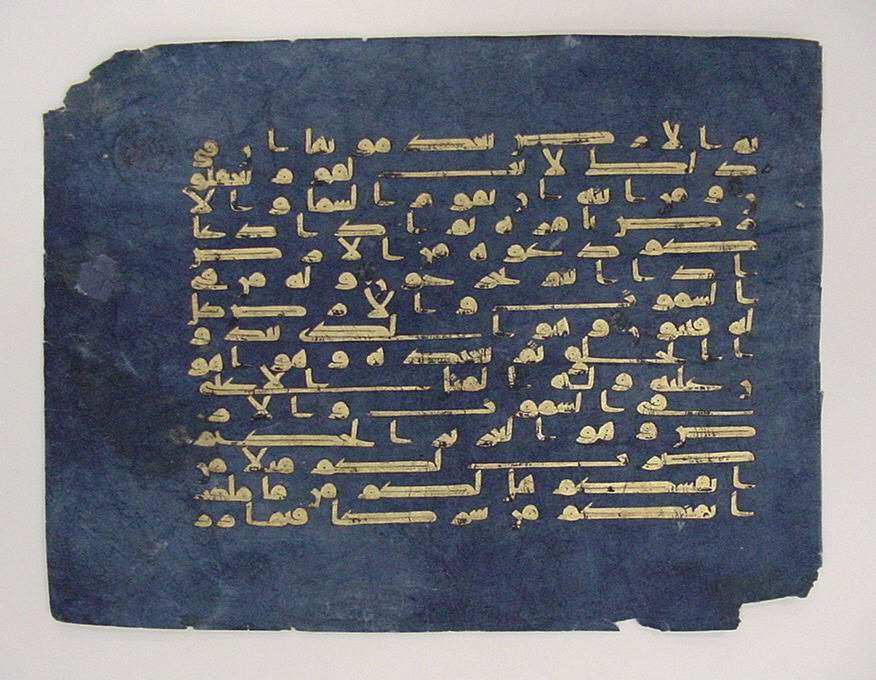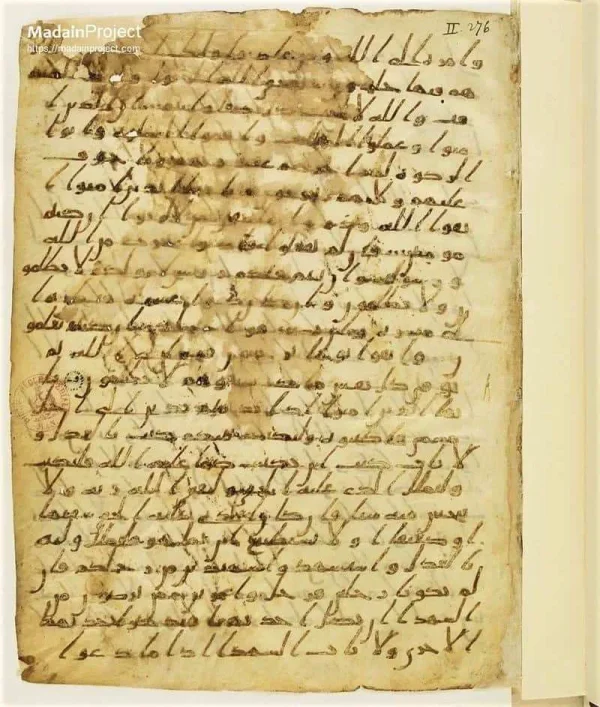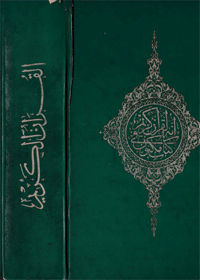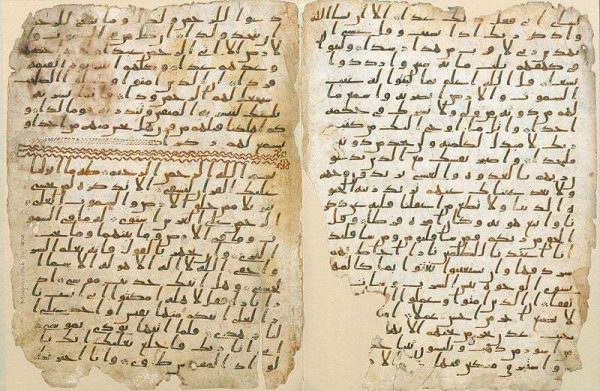Folio from the Blue Quran
Folio from the “Blue Quran”
This folio comes from a sumptuous, multivolume Qur’an with indigo pages and silver verse markers that was probably copied in North Africa. Its palette is thought to refer to the purple‑dyed, gilded manuscripts made in the neighboring Byzantine empire. As in other early Qur’ans, the script here is difficult to read because the letters have been manipulated to make each line the same length, and the marks necessary to distinguish between letters have been omitted.
Year Written: c. late 9th century to early 10th century
Language: Arabic
Script Type: Kufic
Current Location: Most of it is located in the National Institute of Art and Archaeology Bardo National Museum in Tunis, Tunisia; 67 folios in the Musée de la Civilisation et des Arts Islamiques in Raqqada, Tunisia; 1 folio at the Los Angeles County Museum of Art in California, USA; and the other folios are scattered worldwide at various museums
The Blue Quran is one of the most famous and beautiful ancient Qurans in the world. The manuscript has been dated to between the late 9th century to the early 10th century; it has been dated as late as 1020 AD. It is believed that the Blue Quran was created for the Great Mosque of Qairawan in Tunisia.
The pages are written with gold ink on vellum colored with indigo, giving it a distinct blue color. Writing the Quran in gold on the blue vellum was most likely influenced by the elaborate official documents written by the Christian Byzantine Empire.
While much of the Blue Quran is preserved by different institutions, in 2012 and 2013 folios were sold at auction, with one folio reportedly selling for over $800,000.


